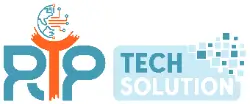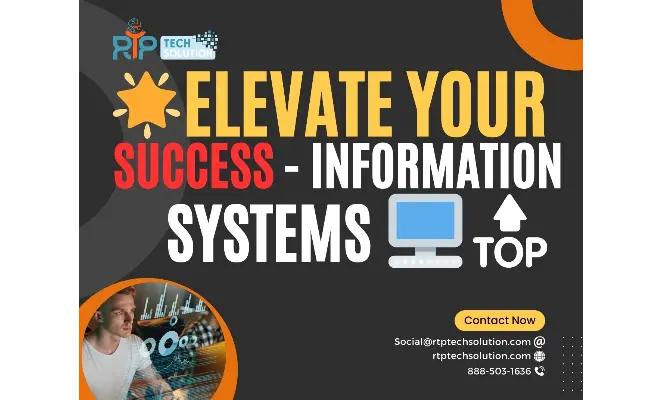In the dynamic landscape of the digital era, organizations across the globe are consistently grappling with change. The lifeline? Information.
But who holds the key to success in this battle of bytes? The champions are those armed with the right tools, notably the myriad types of information systems.
Types of Information Systems
To draw a vivid picture, consider an information system as a cohesive entity. It comprises various components that, when orchestrated in harmony, simplify decision-making processes and streamline operations in an organization. With these components of information systems at their disposal, businesses can efficiently handle a wealth of information resources.
- Executive Information System (EIS)
Perched atop the information system pyramid, the EIS serves as the expert system for top-tier decision-makers, providing them with the tools they need to steer the organization. The EIS functions as a sieve, filtering through colossal volumes of data to deliver succinct yet comprehensive reports, analyses, and simulations. These outputs aid in strategic planning and evaluation, arming executives with insights crucial for organization navigation.
- Decision Support System (DSS)
Resembling a connoisseur in its domain, the DSS is custom-designed to bolster mid-level managers in their decision-making process. This system morphs complex data into more palatable formats. Through the DSS, critical information and analyses become accessible, providing a sturdy platform for decision-makers. Decision Support Systems embody the crossroads where computer science meets management science, playing a pivotal role in strategic planning.
- Management Information System (MIS)
The Management Information Systems, or MIS, serve as a cornerstone in an organization’s information system architecture. Functioning as a conduit, the MIS processes raw data from varied sources into meaningful information. This valuable information is then utilized by mid and operational-level managers to monitor and control the organization’s operations. Through this effective flow of information, the MIS ensures that all management levels remain informed and aligned.
- Transaction Processing System (TPS)
Acting as the backbone of an information system, the TPS is tasked with collecting and storing transaction data from routine operations. Despite seeming mundane, the TPS holds great importance in maintaining updated records and ensuring seamless business operations. The TPS, a computer-based system, operates in real-time, thus maintaining an up-to-date database of all transactions.
- Knowledge Management System (KMS)
The KMS operates with the central objective of managing an organization’s knowledge resources. It efficiently stores and retrieves intellectual assets, supporting various organizational functions. The KMS holds the baton in the relay race of innovation and continuous learning. It fosters a culture of knowledge sharing and growth, adding value to human resources through learning.
- Office Automation System (OAS)
Living up to its name, the Office Automation System amplifies productivity by automating everyday tasks such as word processing, email, and file sharing. OAS, with its automated systems, is a vital part of an information system, taking charge of the essential yet fundamental tasks, and allowing other systems to function optimally.
System Software and Hardware: The Silent Warriors
Behind every efficient information system lies a robust infrastructure of system software and hardware. This infrastructure forms the foundation upon which these systems operate, thereby facilitating their smooth functioning. The computer system, inclusive of both hardware and software, is an essential tool for information management.
The Role of Information Security Analysts
In the digital realm, the wealth of data being processed and stored by organizations has grown exponentially. This proliferation of digital information has led to a significant surge in cyber threats and data breaches. As a result, the role of information security analysts has transitioned from being important to absolutely indispensable.
Information security analysts serve as the sentinels of an organization’s digital fortress. They play a crucial role in ensuring the safety and security of the various types of information systems used within a business.
The Guardians of Information Systems
Information security analysts function as guardians, shielding these systems from an array of potential cyber threats. They diligently monitor networks for security breaches and investigate violations when they occur. They use a series of defensive measures, such as firewalls and encryption, to protect sensitive information from unauthorized access, use, disclosure, disruption, modification, or destruction.
The Architects of Information Integrity
Beyond safeguarding data, information security analysts are instrumental in preserving the integrity of data. They ensure that information is accurate, consistent, and trustworthy over its entire life cycle. They enact measures that protect data from being altered or destroyed in an unauthorized manner, thus guaranteeing the reliability and correctness of information.
The Protectors of Confidentiality
In addition, information security analysts also ensure the confidentiality of data. They implement protocols to regulate who can access specific data and systems, and under what circumstances. Through their efforts, they maintain the privacy of sensitive information, safeguarding it from being disclosed to unauthorized individuals, entities, or processes.
In a world where data is both an asset and a vulnerability, the role of information security analysts becomes crucial. They form the first line of defense against cyber threats, ensuring that the various types of information systems within an organization remain safe, secure, and effective. They are indeed the unsung heroes of the digital information age.
The Emergence of Social Networking and Communication Technology
In the context of information systems, it’s impossible to overlook the impact of social networking and communication technology. They have transformed the ways in which information is shared and consumed, adding a new dimension to traditional systems.
As we bring this journey to a close, it’s clear that these six types of information systems are not merely supporting actors but leading roles within any organization. Their synergistic operation is instrumental in streamlining decision-making, ensuring operational fluidity, and fostering a culture of ongoing learning and innovation.
Rather than isolated entities, these systems interweave to form a comprehensive network. Grasping their roles and functionalities could be your winning strategy in this digital age, carving out the difference between mere survival and thriving success. In this daring new world powered by information technology, the question is—are you ready to leverage the strength of these information systems?
At RTP Tech Solution, we’re here to help you navigate the complexities of these systems and maximize their potential in your organizational context. Connect with us and let’s transform your information management strategy today.
Harness the power of information systems and step confidently into the future of digital innovation. Reach out to RTP Tech Solution now!




